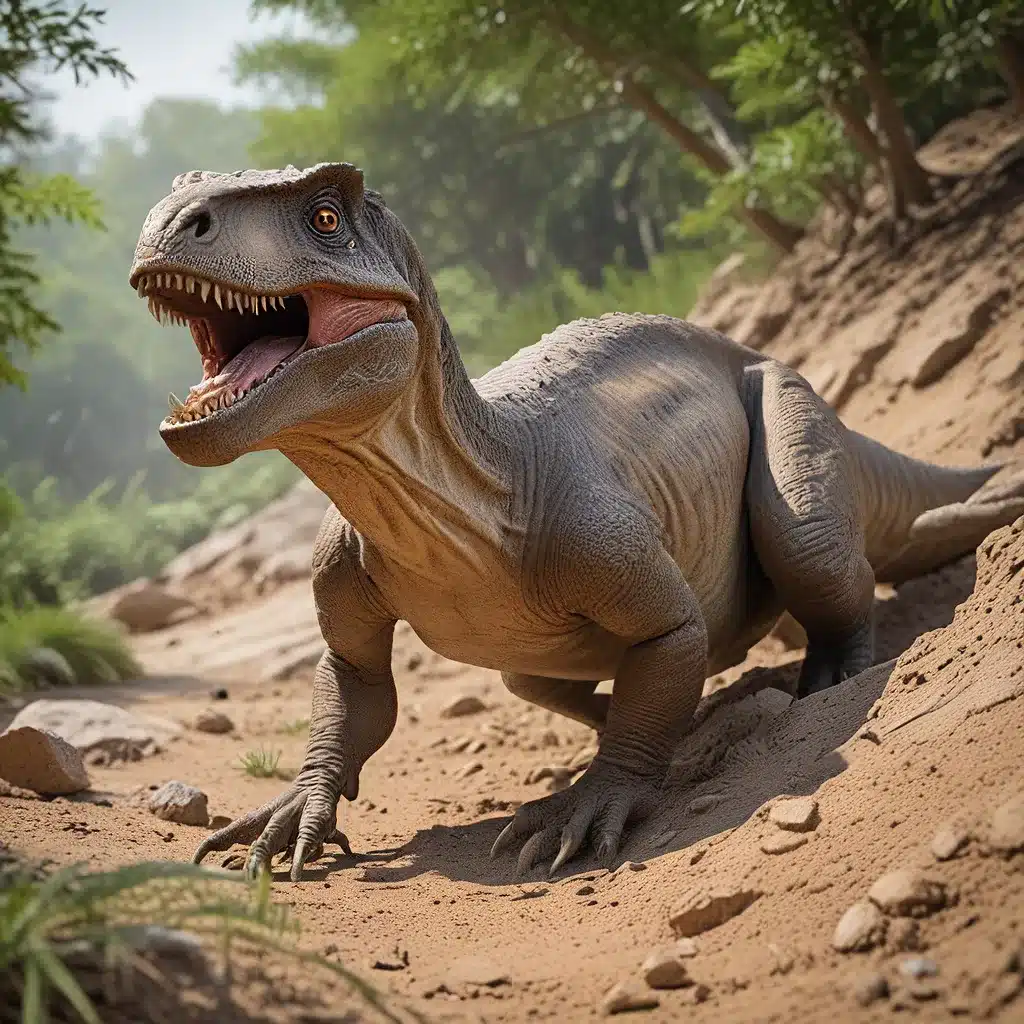
Unraveling the Mysteries of Titanosaur Reproduction
Recent archaeological discoveries in the Narmada Valley of central India have shed remarkable light on the reproductive habits of one of the largest dinosaurs to have ever walked the Earth – the titanosaurs. Researchers from the University of Delhi, led by Harsha Dhiman, have uncovered a treasure trove of information by examining over 250 fossilized dinosaur eggs found across 92 distinct nesting sites.
These nests, dating back to the Late Cretaceous period, offer an unprecedented glimpse into the lives of these colossal sauropods. Detailed analysis of the egg fossils has allowed scientists to make fascinating inferences about the reproductive strategies and social behaviors of the titanosaurs that once roamed this region.
One of the most remarkable findings is the diversity of egg species, or oospecies, represented in the nesting sites. “The presence of six different egg-species suggests a higher diversity of titanosaurs than is represented by the skeletal remains from this region,” explains Dhiman, the lead author of the study published in PLOS ONE.
The discovery of these nesting grounds is of great significance, as it provides valuable insights into the lives of dinosaurs during the final chapters of the Mesozoic era, just before the cataclysmic events that led to their extinction.
Communal Nesting and Parental Care
The layout of the nests suggests that these titanosaurs buried their eggs in shallow pits, much like modern-day crocodiles. This behavior, known as ground nesting, is in contrast with the tree-nesting habits of many other dinosaur species.
Furthermore, the close proximity of the nests within the same area indicates that these titanosaurs exhibited a colonial nesting strategy, similar to that observed in various species of modern birds. This colonial behavior may have provided the hatchlings with a degree of protection and increased the chances of their survival.
However, the tightly packed nature of the nests also suggests that the adult titanosaurs likely left the newborns to fend for themselves, rather than actively caring for their young. This hypothesis is supported by the discovery of certain pathologies, such as a rare case of an “egg-in-egg” deformity, which suggests that these dinosaurs may have laid their eggs in a sequential manner, akin to the reproductive patterns seen in modern birds.
Adapting to the Arctic Climate
While the Narmada Valley nesting sites provide invaluable insights into the reproductive strategies of titanosaurs, other recent discoveries have shed light on the remarkable adaptations of dinosaurs to polar environments.
Paleontologist Pat Druckenmiller and his team from the University of Alaska have uncovered a trove of dinosaur fossils along the Colville River in the remote reaches of northern Alaska. These findings challenge the long-held assumption that dinosaurs were exclusively adapted to warm, tropical climates.
The fossils, which include the remains of herbivorous hadrosaurs and the predatory Nanuqsaurus, suggest that these dinosaurs were not merely transient visitors to the region, but year-round residents that had evolved various adaptations to survive the harsh Arctic conditions.
One intriguing hypothesis is that some of the smaller dinosaur species, such as the Thescelosaurus, may have been capable of hibernating during the long, dark winters. Evidence for this comes from the distinctive growth rings found in the bones of certain Colville River specimens, which could indicate periods of dormancy similar to the hibernation patterns observed in modern-day mammals.
Endothermy and Survivability
The presence of only dinosaur, bird, and mammal fossils in the Alaskan deposits, and the absence of any cold-blooded reptile remains, provides strong evidence that the polar dinosaurs were likely endothermic to some degree. This means they had the ability to regulate their own body temperature, a characteristic shared by modern warm-blooded animals.
Druckenmiller explains, “Endothermic animals typically share certain characteristics such as faster growth rates and a requirement for more food. Crucially, it was thought this is what allowed some groups to survive the global cooling historically blamed for the dinosaurs’ extinction.”
The implications of this discovery are profound, as it challenges the long-held belief that dinosaurs were primarily ectothermic, or cold-blooded, like modern reptiles. The fact that these polar dinosaurs were able to thrive in such inhospitable environments suggests a greater diversity and resilience within the dinosaur lineage than previously recognized.
The Legacy of Polar Dinosaurs
As scientists continue to uncover more evidence of dinosaurs adapted to the frigid polar regions, our understanding of these ancient creatures is being radically transformed. The insights gleaned from the Narmada Valley nesting grounds and the Colville River fossils are reshaping the narrative of dinosaur evolution and behavior.
These discoveries have the potential to shed light on the complex physiological and ecological factors that allowed certain dinosaur species to not only survive but thrive in the most inhospitable corners of the prehistoric world. By studying the adaptations and survival strategies of these polar dinosaurs, researchers may unlock crucial clues about the ultimate demise of the dinosaurs and the rise of modern vertebrates.
Moreover, the rich trove of dinosaur fossils found in these remote Arctic regions serves as a testament to the resilience and adaptability of life on Earth. As The Lost Kingdoms continues to unravel the secrets of the ancient world, the story of the polar dinosaurs will undoubtedly remain a captivating and thought-provoking chapter in the ongoing saga of life’s triumph over the harshest of environments.


